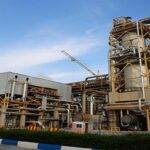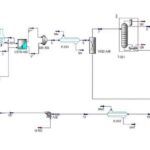Introduction
Dichloro dimethyl silane, a colorless liquid with a pungent odor, possesses a low flash point of 16°F. It is susceptible to hydrolysis in water and ethanol but is soluble in benzene and ether. The vapor is denser than air, and the liquid is denser than water. DMDCS is synthesized via a direct process involving the passage of methyl chloride through a heated tubular reactor packed with silicon and copper(I) chloride. In this process, silicon is placed in a fluidized bed reactor at approximately 300°C, with Cu₂O serving as a catalyst. As methyl chloride flows through the reactor, DMDCS is produced primarily within a mixture of various silane compounds.
Separation Techniques
Several methods exist for separating the components of a solution. Industrial processes commonly employ techniques such as absorption, stripping, extraction, and distillation. Distillation, in particular, leverages the differences in boiling points of components to achieve physical separation. Various distillation methods exist, including simple distillation, fractional distillation, steam distillation, vacuum distillation, and others.
Chemical Reaction for DMDCS Production
The chemical reaction to produce dichlorodimethylsilane is as follows:

In addition to dichlorodimethylsilane, this reaction produces several byproducts. These compounds have similar boiling points, making their separation and purification a complex process. Economic considerations necessitate the removal of impurities to obtain high-purity dichlorodimethylsilane for use in the formation of the final product, a hydroxyl-terminated polydimethylsiloxane. The purity of dichlorodimethylsilane is critical and must reach 99%, which is a challenging task due to the close boiling points of these compounds. This project presents five different schemes to identify the optimal separation method for the main product using Aspen Plus. As an example, the simulation results for the third and fourth schemes are as follows:
The Third Plan
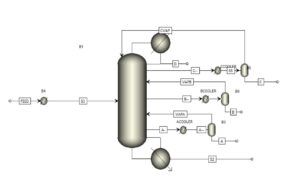
The Fourth Plan
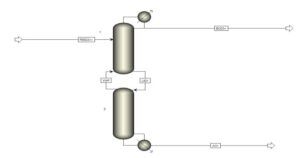
Reboiler and Condenser Column Design with EDR
Heat exchanger design has also been performed using Aspen EDR, and an example of the schematic geometry of a reboiler is shown in the figure below.
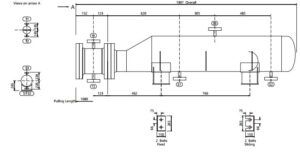
In addition to the simulation files of Aspen Plus and the design of the heat exchangers in the plan, this project also has a complete report.
